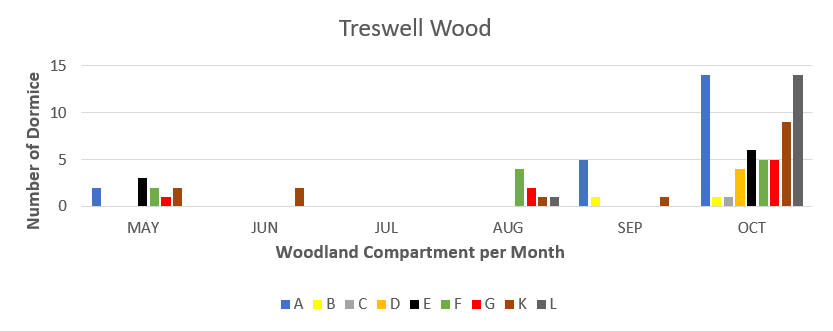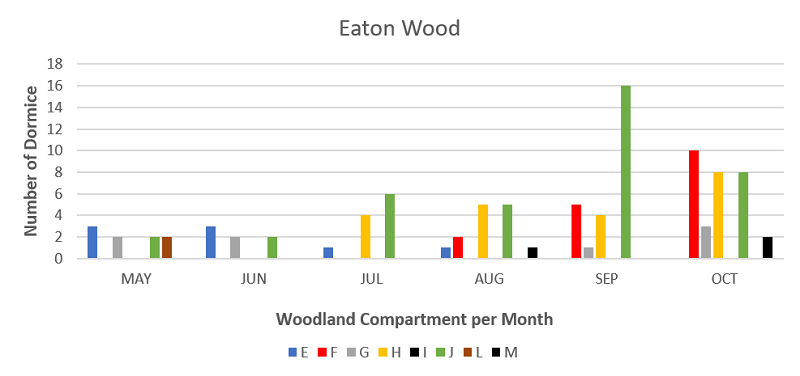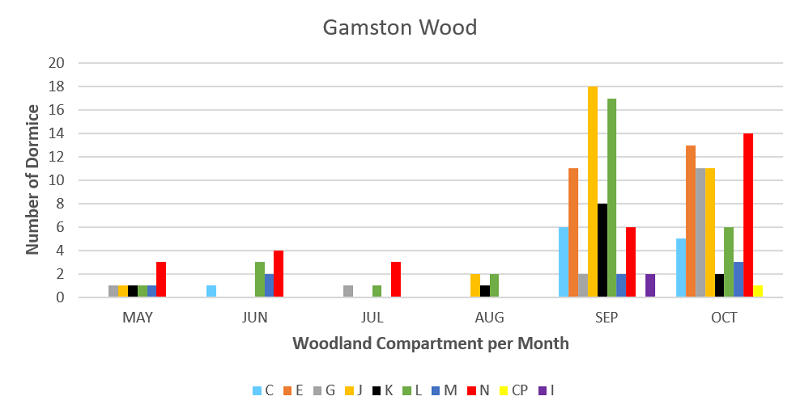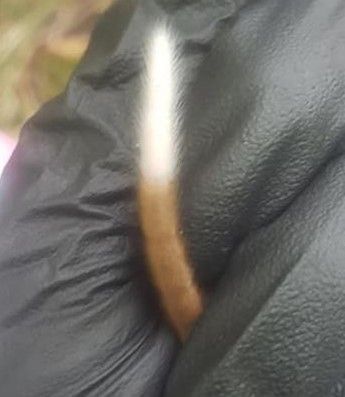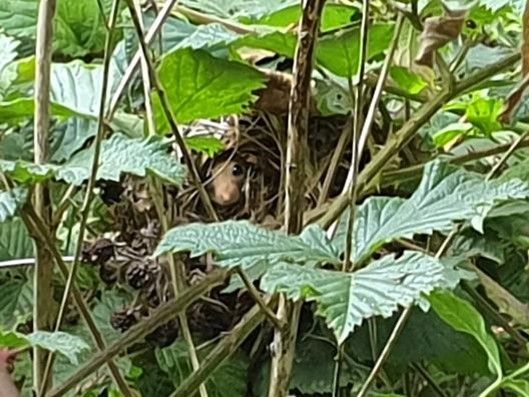Lorna Griffiths, from the Nottinghamshire Dormice Group (NDG), describes how the dormice in her county are delighting the group members.
In 2016 I wrote an article for The Dormouse Monitor about the hazel dormouse releases in Nottinghamshire. Since then, the Nottinghamshire Dormouse Project, which focuses on the three reintroductions, Treswell Wood (2013), Eaton Wood (2014) and Gamston Wood (2015) has been a growing success. Not only have the dormice dispersed throughout the respective woodlands, but they have also begun to spread into the wider landscape.
New homes for growing dormouse population
Almost two years ago, in February 2019, the Nottinghamshire Dormouse Group (NDG) was granted permission to install nest boxes in a small private woodland called Silcock Wood, abutting the western edge of Gamston Wood (Figure 1). The wood is roughly eight hectares and was planted on agricultural fields 25 years ago as part of a woodland grant scheme.

That February, ten dormouse boxes were put up along the edge of the only path, about 20m apart. They were placed roughly 24m – 30m from the earth banks that mark the boundary with Gamston Wood. We first checked the boxes in April but there was no evidence of dormice. However, in May we found not just a characteristic dormouse nest but a heavily pregnant female too. On our return in June, she was still there with six healthy grey young, their eyes still closed.
In July, three of the boxes contained dormouse nests, and three dormice were recorded. By August, eight of the ten dormouse boxes contained dormouse nests, two of the nests had litters of young and another housed a single individual.
Following this incredible use of the boxes, the landowner gave NDG permission to install ten more. Wasting no time, we put the next ten boxes up the same month, placing them further into the wood, with the furthest box about 100m from Gamston Wood. As we were putting up box number 20, a heavily pregnant dormouse was spotted running up a young sapling, close to where we’d put the box. On further investigation, we discovered a wild nest at the base of the sapling (Figure 2).

By October, five of the ten newly installed nest boxes contained dormouse nests, and five dormice were recorded. During that October check we found a total of ten dormice in the twenty nest boxes. It was incredible. Fast forward a year and I’m delighted to report that this October we found dormice in 14 of the 20 boxes, whilst more animals were found in wild nests and nest tubes. The total number of dormice we found during the 2020 season was a whopping 73, including pinkies, young litters, juveniles and adults.
Railway line homes prove popular too
In May 2020, we were given permission by Network Rail to install nest boxes on their land. Five nest-boxes were initially installed along a stretch of the eastern side of the rail line.

The line is live and supports 100mph trains, consequently, the boxes were put up on trees that could be reached without the need to cross the boundary fence. Just two months later we found a dormouse nest in the furthest box, approximately 91m from the southernmost edge of Silcock Wood. Increasingly excited about the results, we put three more nest boxes up in August, taking the line to the edge of the field. In October, our last check, a dormouse was recorded in a nest in nest box 4, and an unoccupied dormouse nest was discovered in nest box 7 (170m from the private Silcock Wood; Figure 3).
Moving further afield
In Spring 2020 we set our sights on the wider landscape around Treswell Wood. Permission was granted by the landowner to install nest boxes in a small area of woodland named Lady Wood, approximately 0.5km (as the crow flies) from the westernmost tip of Treswell. Lady Wood is a semi-natural broadleaved woodland and has been in situ since at least 1835 (according to historic maps). It isn’t listed on the Ancient Woodland Inventory, probably because of how small it is. It was originally named Norwood, suggesting a much older history and the irregular shape of the woodland indicates that it’s likely to predate the surrounding fields. The woodland is coppiced on a small scale by the landowner for occasional firewood.
In March 2020, five dormouse boxes were installed on hazel coppice, surrounding a patch of bramble scrub. A further five boxes were added towards the end of July. The boxes were checked each month, but no dormouse evidence was found. Then finally, during the last monitoring session of the year in October, three of the ten boxes contained dormouse nests with a young adult male curled up in one of them (Figure 4). The shortest route to Lady Wood from Treswell, without having to cross open ground, via two stretches of hedgerow and along one small woodland copse (Figure 4), is approximately 625m. We’re hoping to install further boxes there to create a separate National Dormouse Monitoring Programme site.
Lines mark the shortest route via the hedgerow networks.
During the 2021 survey season we’ll concentrate our efforts on finding out how dormice have spread across the landscape surrounding Eaton Woods. We’ve approached the landowners of two small woodlands to the north of Eaton Wood, both of which are connected via intact hedgerows, with the shortest routes being 300m and 570m, respectively (Figure 5).
The story closer to home
Does this mass exodus mean that our resident dormice have left the reintroduction woodlands? Not in the slightest. During 2019 and 2020, overall dormouse numbers continued to rise and, this season, we’ve also recorded lots of wild nests, some with occupants. Because of the spring lockdown, we were unable to check the boxes in April. However, the remaining checks (May to October) were carried out by licence holders only (working singularly or in leap-frogging pairs, to maintain social distancing).
Figure 6 shows the total number of dormice recorded during the NDMP box checks for each of the woodlands during 2020. These totals don’t include the ad hoc dormice, for example, those found in wild nests (Figure 12), recorded by bird ringers in bird boxes or dormice in nest tubes. The total number of nest boxes in each of the woodlands are Treswell Wood (160), Eaton Wood (99), Gamston Wood (122), and Silcock Wood (20).

Building a better future for dormice
In 2017, the existing woodland management plans for the three woodlands had reached their 10-year expiration dates, and the plans were subsequently updated by Nottinghamshire Wildlife Trust, which owns the woods. The new plans included restoring some of the overstood coppice compartments and thinning areas that had previously been left unmanaged. Most of the work was concentrated in Eaton Wood, as historically this woodland had received the least management over the past 10 – 20 years or so.
Over a period of thee years, three of the most neglected sections of Eaton Wood were subjected to a period of concentrated management. Regeneration compartments were created by selectively felling a high percentage of the overstood trees. Then a regime of natural regeneration and enhanced planting followed, to increase the existing stocking densities as well as to enhance the species diversity. We removed old nest boxes from unproductive areas, and new ones were installed in scrubby compartments that had regenerated following recent (approx. 5-7 years) coppice operations.
In 2018, dormouse numbers increased (Figure 7), with several litters found in each of the woodlands. It’s hoped that once the recently worked compartments have had time to regenerate (the next 2 or 3 years), dormice will move back into these areas, resulting in a further increase in their population.
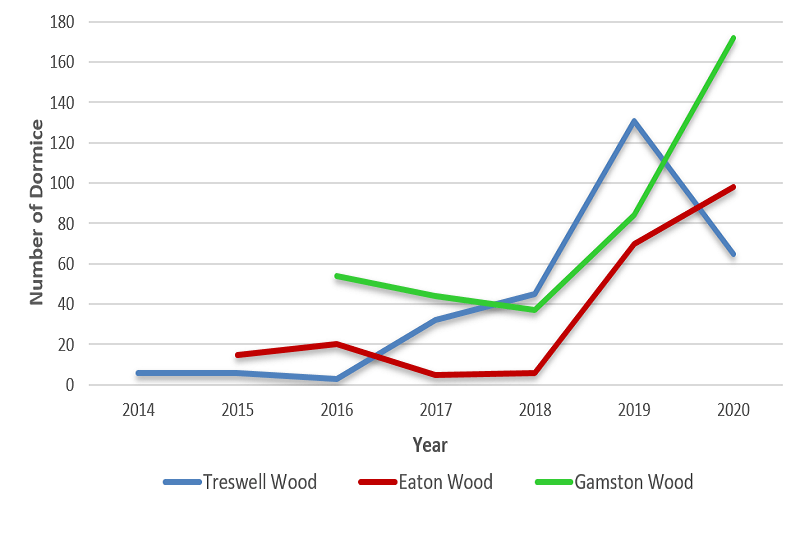
The following graphs highlight the most productive dormouse compartments within each of the three woodlands: Treswell Wood (Figure 8), Eaton Wood (Figure 9) and Gamston Wood (Figure 10). This information will help us to determine which sections to concentrate our efforts in terms of future woodland management.
During the September 2020 check, one of the licence holders recorded a dormouse in Gamston Wood with a remarkably long white tip to its tail (Figure 11). We often record a high ratio of white-tipped dormice in this woodland, and now record each occurrence as part of our standard biometrics. This particular white-tip measured 23mm. The female dormouse in question was found in a nest box with mum and six siblings, all but one of the dormice had white-tips of varying sizes.
And finally, we have also captured some great dormouse footage this year using our motion detection cameras, including rarely seen footage of a mum marshalling her litter up a tree. Is she teaching them specific behaviours? Fingers crossed that our next project update in five years time will provide even more good news, and our dormice continue on the move in Nottinghamshire.
Written by Lorna Griffiths.
Find out how we’re working to protect the hazel dormouse and what you can do to help:



